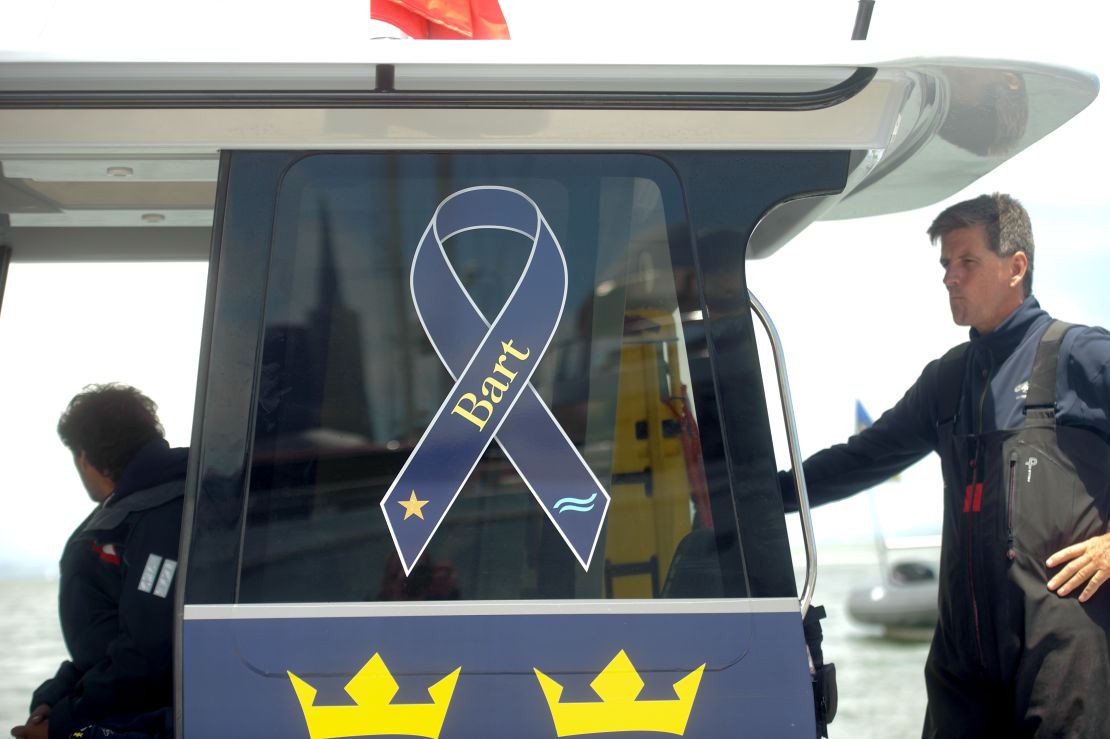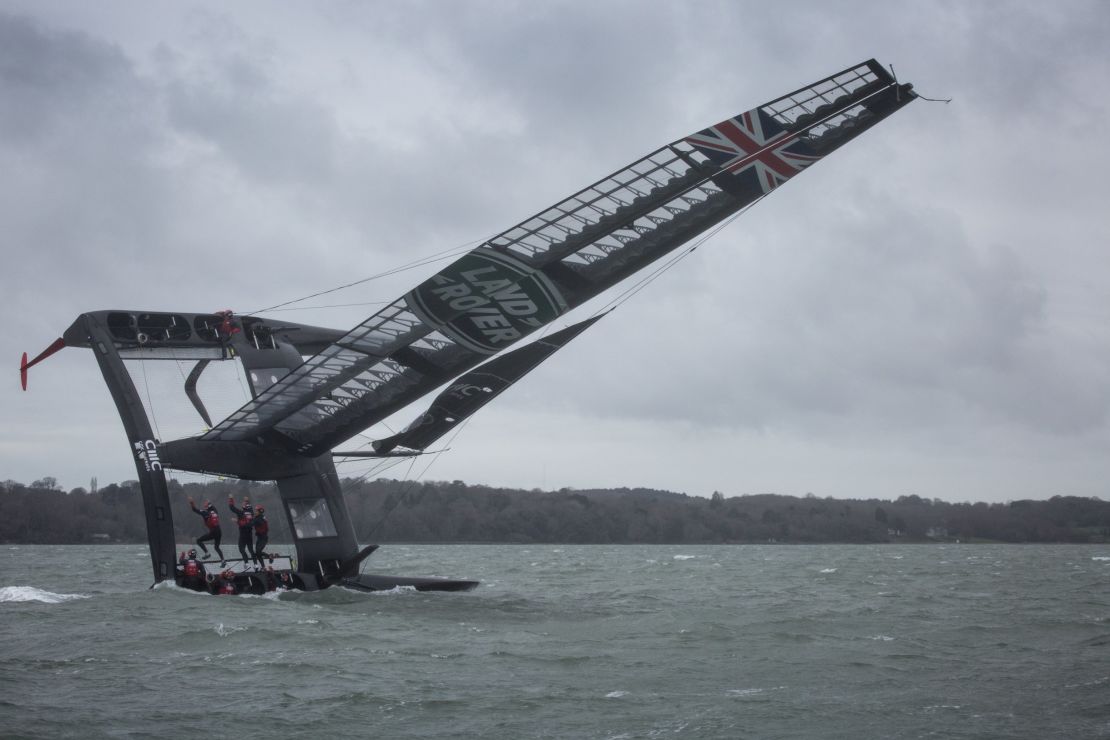Story highlights
America's Cup is a dangerous game
Graeme Spence had a lucky escape
Boat designers warns of high-speed risk
Emergency divers in place for each team
Graeme Spence has undeniably used up one of his nine lives.
Under bright blue skies on a February training day in Bermuda’s Great Sound, the Oracle Team USA crew member was hurled into the water after the boat’s front end pitched forward into the seas below.
An onboard camera caught the moment Spence was flung into the water somehow missing the foils and rudder as the vessel careered through the water.
At the time, Spence said of his fellow crew members: “They were probably all preparing themselves to find a bloody mess in the water.”
Safety is the top priority for the six sailors of any America’s Cup – but exercising caution during the event billed by one publication as “the billionaire death race” is fresh in the minds of this year’s event, following tragedy in the lead up to its last running four years ago.
Terry Hutchinson was the former skipper of Artemis Racing, the boat that capsized and killed British sailor Andrew ‘Bart’ Simpson. Simpson suffered major head trauma and drowned after spending 10 minutes underwater.
READ: The Olympic cyclist pedaling on water

No longer a part of the America’s Cup team, Hutchinson said of the Spence incident: “If he’d been hit by the rudder, he’d probably have been dead.
“As much as you wouldn’t want to see anything like that happen, I think that it’s a risk that everybody has accepted. I suspect most people think ‘It will never happen to me.’”
Hutchinson describes the current, ultra-swift crop of America’s Cup boats as “definitely pushing the boundaries.”
They feature the most technologically advanced boats in history, clipping the water at speeds of up to 60mph, leading to comparisons with Formula One.
‘A need for care’
As an engineer, Dirk Kramers, the design guru behind Land Rover BAR’s entry, admits that his desire to test the laws of physics is counterbalanced by a concern for those on board.
“We’re starting to get to speeds where we need to be careful. I’m getting very worried about it if we get that much faster,” Kramers tells CNN.
“Suddenly, we’ve got boats moving at the speed of cars – and try walking on the top of your car at 55mph. It doesn’t take a lot to fall off.”
The team’s helmsman Ben Ainslie, meanwhile, admits he’s prone to the occasional sleepless night worrying about the sailors under his command, along with their families who have temporarily settled with them in Bermuda.
One of Ainslie’s grinders (effectively, those who power the boat), David “Freddie” Carr is in his fourth America’s Cup campaign, and has witnessed the seismic shift in speed and technology.

“You’re sailing a boat very rapidly with five of your mates in front of you, and you’re trying not to crash,” he says. “The ramifications if it goes wrong are terrible.”
Jimmy Spithill, who driving Team Oracle USA at the time of the Spence incident, echoed those sentiments.
“Any time anyone goes over the front of one of these boats in any situation, the chances of not getting hit by one of his appendages is slim. It’s a real fear,” he told RedBull.com.
“Every time you see or hear of someone going over the front, it’s a real bad feeling. That time of seeing him go over before the thumbs up always takes too long.”
For his part, Spence has gone through the ramifications of his close call, knowing he could have suffered “a major laceration, head injury or spinal injury.”
The America’s Cup argues it has done everything in its power to reduce the risk and improve safety – both before and after Spence’s close call in February – from routine safety drills, to reenacting underwater emergencies.
“These situations simply can’t be a surprise and we need to be prepared for all eventualities,” Spence says.

‘Emergency divers on board’
In case of emergency, each team assigns two of its members as trained paramedic divers. Land Rover BAR’s Ben Williams is doubling up in that role to compliment his primary post as the team’s strength and conditioning coach. As a former fireman, he was an obvious choice.
“It’s the rules of the competition, to have rescue swimmers,” he explains, noting that his rescue partner is an experienced diver of 10 years with (Britain’s) Royal National Lifeboat Institution.
Williams details the medical equipment on his chase boat, which includes wetsuits and scuba equipment, in case anyone gets trapped under water. That precaution was put in place after Simpson’s death in 2013.
“And it’s needed,” says Williams. “There’s no two ways about it. It’s a dangerous sport with speeds of 50mph with an open cockpit. You’re not strapped in, and we have a duty of care to all these athletes.”
Simpson’s best friend and former boss at Artemis, Iain Percy, reflected on the potential dangers of elite racing in 2015, shortly after the May 9 anniversary of the tragedy.
“I don’t think it will ever leave me,” Percy told CNN. “I lost someone that was close to me.”
Visit CNN.com/sailing for more news and videos
Percy described Simpson as “there every day,” and in a way he is. A ribbon is affixed on the team’s boat each time it sails as a nod to Artemis’ fallen crew member.














